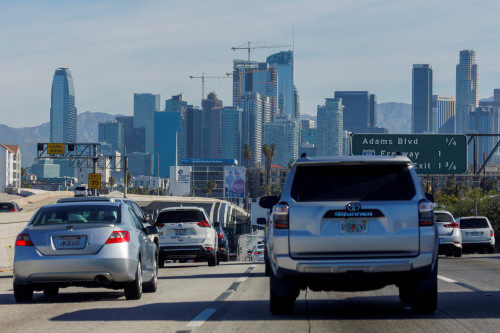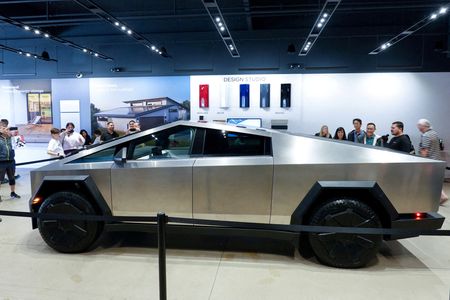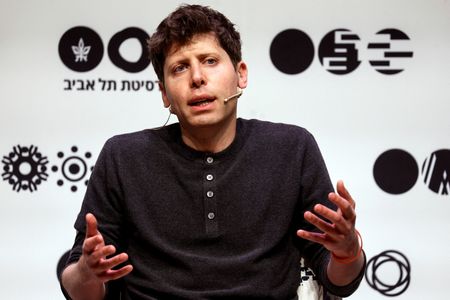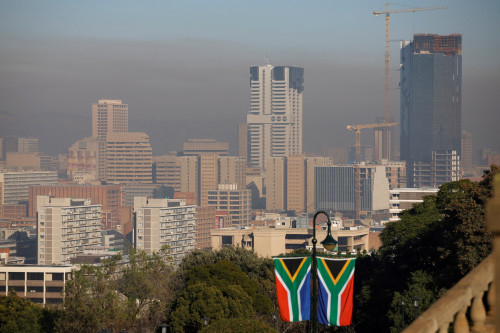By Andrew Chung
WASHINGTON (Reuters) – U.S. Supreme Court justices appeared sympathetic on Wednesday to a bid by fuel producers to challenge California’s standards for vehicle emissions and electric cars under a federal air pollution law in a case involving the Democratic-governed state’s power to fight greenhouse gases.
The justices heard arguments in an appeal by a Valero Energy subsidiary and fuel industry groups of a lower court’s ruling that they lacked the required legal standing to challenge a 2022 U.S. Environmental Protection Agency decision to let California set its own regulations, separate from those of the federal government.
Questioned posed by conservative and liberal justices alike indicated that the court would allow fuel producers to pursue the case. It remained uncertain whether the court would announce a rule suggested by the challengers that would make it easier for a wider array of groups and businesses to challenge any government regulation that may impact their bottom line. The court has a 6-3 conservative majority.
The dispute centers on an exception granted to California during Democratic former President Joe Biden’s administration to national vehicle emission standards set by the agency under the landmark Clean Air Act anti-pollution law.
Though states and municipalities are generally preempted from enacting their own limits, Congress allowed the EPA to waive the preemption rule to let California set certain regulations that are stricter than federal standards.
Valero’s Diamond Alternative Energy and related groups challenged the reinstatement of California’s waiver, arguing that the decision exceeded the EPA’s power under the Clean Air Act and inflicted harm on their bottom line by lowering demand for liquid fuels.
“The government has tilted the playing field and foreclosed us from being able to freely sell our product,” Jeffrey Wall, a lawyer for the challengers, told the justices.
Liberal Justice Elena Kagan told Wall that the government’s tilt of the market “seems like an easy thing to show” in this case.
A lawyer for Republican President Donald Trump’s administration, Edwin Kneedler, agreed with the U.S. Court of Appeals for the District of Columbia Circuit that the challengers had not shown the evidence that would entitle them to sue.
But Kagan told Kneedler that both the EPA and California had made declarations that the waiver would reduce gasoline-related emissions, seeming to validate the concerns of the challengers.
Numerous questions centered on whether the assertions by the challengers about how the regulation would influence carmakers and thus affect fuel producers amounted to a “common sense inference” that would permit them to sue.
Conservative Justice Amy Coney Barrett said that in relying on common sense, “It’s not that high a burden.”
California, the most-populous U.S. state, has received more than 75 waivers since 1967, requiring increasingly higher emissions performance and EV sales.
The EPA’s 2022 action reinstated a waiver for California to set its own tailpipe emissions limits and zero-emission vehicle mandate through 2025, reversing a 2019 decision made during Trump’s first administration rescinding the waiver.
Trump’s administration has told the court that it is reassessing the 2022 reinstatement decision, a process that may again lead to the withdrawal of the waiver.
The D.C. Circuit threw out the lawsuits in 2024, finding that Valero and the states lacked the necessary standing to bring their claims because there was no evidence that a ruling in their favor might affect the decisions of auto manufacturers in a way that would result in fewer electric and more combustion vehicles to be sold.
The Supreme Court is expected to rule by the end of June.
The court has taken a skeptical view toward expansive authority for federal regulatory agencies and has restricted the powers of the EPA in some important rulings in recent years.
In 2024, the court blocked the EPA’s “Good Neighbor” rule aimed at reducing ozone emissions that may worsen air pollution in neighboring states. In 2023, the court hobbled the EPA’s power to protect wetlands and fight water pollution. In 2022, it imposed limits on the agency’s authority under the Clean Air Act to reduce coal- and gas-fired power plant carbon emissions.
(Reporting by Andrew Chung; Editing by Will Dunham)





